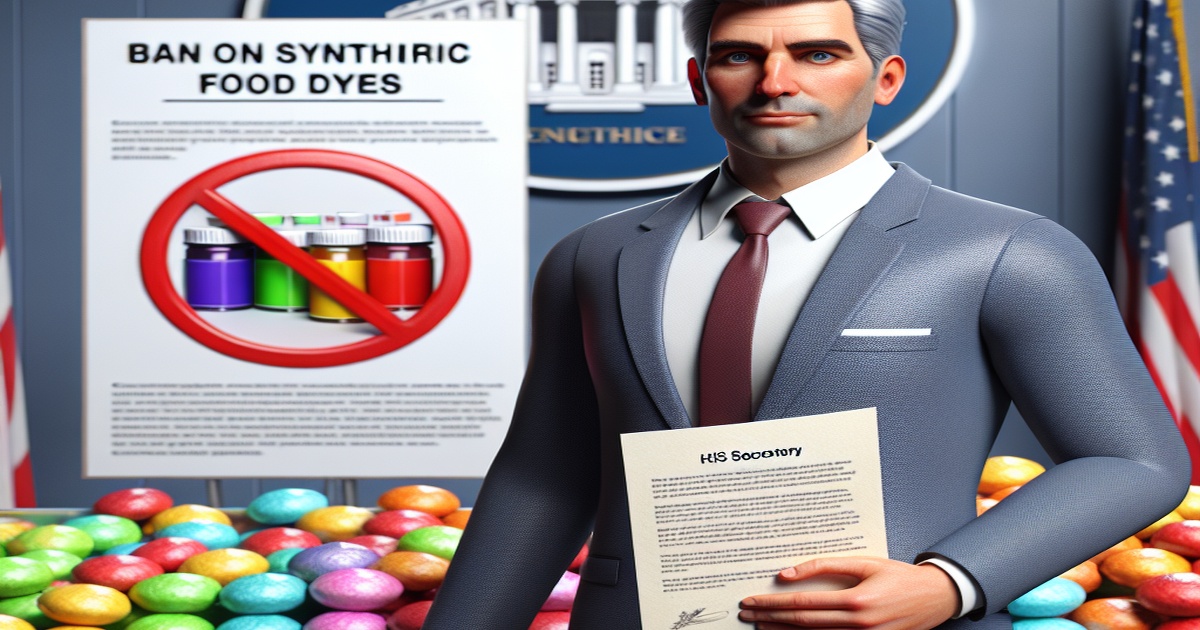Robert F. Kennedy, Jr., the Secretary of Health and Human Services, has declared the intention of the Food and Drug Administration (FDA) to gradually eliminate the use of petroleum-derived synthetic dyes in the food supply across the nation. This decision, supported by the Trump administration, is seen as a significant advancement in the initiative to "Make America Healthy Again," and it will significantly affect common food items such as breakfast cereals, candies, and various snacks, which have been associated with neurological issues in some children.
Kennedy expressed his concerns regarding the long-standing practice of adding harmful petroleum-based chemicals to food without informing consumers. He emphasized that these additives provide no nutritional value and can be dangerous to the health and development of children. "We’re aiming to restore scientific integrity, use common sense, and rebuild public trust," he remarked, highlighting the collaboration with the industry to remove these toxic components from everyday foods.
During a recent cabinet meeting, Kennedy pointed out the negative impact of these dyes on educational outcomes, school violence, mental health, and physical well-being. The FDA is prioritizing the assessment of natural substitutes for these synthetic dyes and is adapting regulations to support the food industry in this transition. FDA Commissioner Dr. Marty Makary noted the alarming rise in childhood obesity, diabetes, depression, and ADHD, suggesting that the associated health risks of petroleum-based dyes warrant significant caution.
Among the dyes slated for removal is Citrus Red No. 2, which is commonly used to color the skin of some oranges, and Yellow No. 6, found in products such as Airheads and various cosmetics. Recent studies suggest that synthetic food colors can be connected to neurobehavioral issues in youth, specifically hyperactivity, although sensitivity to these compounds can differ among children.
However, while some authorities, such as California’s Office of Environmental Health Hazard Assessment, indicate that certain children may experience adverse reactions to food dyes, the scientific community remains divided. There is no definitive evidence linking these dyes to academic difficulties or deviations in mental and physical health.
The FDA had previously banned the dye Red 3, associated with cancer in laboratory animals, following a federal mandate to prohibit any additives deemed carcinogenic. It was noted that the mechanism by which Red 3 causes cancer in rats is not applicable to human beings. Dr. Peter Lurie, a former FDA official, illustrated that the primary function of artificial food dyes is to benefit food manufacturers financially rather than meet consumer health needs. He argued that eliminating synthetic dyes would not be harmful, as their role is largely to enhance the visual appeal of highly processed foods, particularly to younger audiences.







5 Comments
G P Floyd Jr
This initiative aligns with the growing need for transparency in food production. More informed choices for consumers!
Rolihlahla
Finally, a move towards safer food! Kudos to Kennedy and the FDA for prioritizing our children’s health.
Martin L King
Thank you, FDA, for listening to the concerns of families. This decision shows progress in food safety!
Rolihlahla
This initiative seems to be about optics rather than substance. It won’t fix the actual health problems kids face.
Marishka
This is a prime example of good governance prioritizing public welfare over corporate profits. Well done!